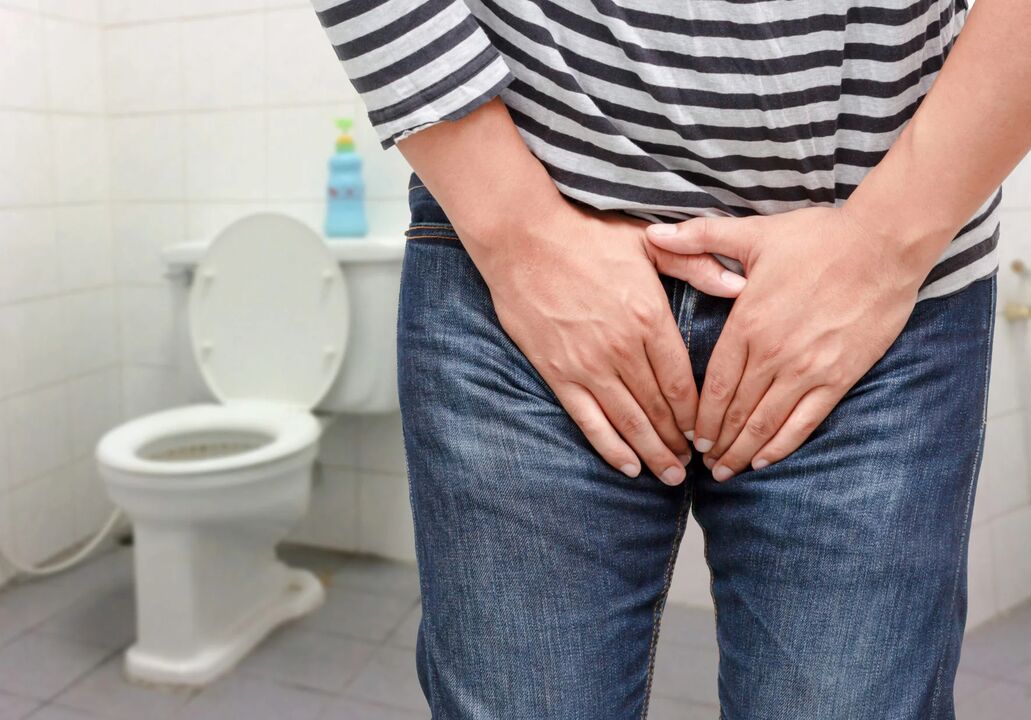
Causes of cystitis in men
- Under the influence of radiation, immunity is reduced and people suffer from diabetes and blood diseases;
- The immune system reacts negatively;
- Inflammatory processes of the prostate, kidneys, ureters;
- Pressure on the bladder due to prostate cancer or benign growth;
- Fistula formation in the rectum;
- septicemia;
- The damage that sexually transmitted infections cause to the body;
- reverse urinary flow;
- Bladder injury, including bladder injury resulting from surgical intervention in the pelvic area;
- Protozoan viruses penetrate the blood and lymph fluid.
Types of cystitis
- latent.The disease occurs without obvious symptoms and is discovered during routine physical examinations. The pathology has rare periods of exacerbation with symptoms consistent with acute cystitis.
- persistent.Approximately 2 exacerbations are recorded per year. Symptoms of this disease are moderate.
- Interstitial.This form is characterized by frequent exacerbations and the presence of pain even during rest. This type of cystitis is considered the most dangerous and difficult to treat type, causing rapidly progressive destruction of the bladder wall.
- cervix.The inflammatory process is located in the neck of the bladder, affecting its sphincters. Men face the problem of frequent urination and incontinence. The process of emptying the bladder itself can become painful.
- Three square stones.The inflammatory process begins in the sphincter of the affected organ and spreads to the ureteral orifice. This form often causes urinary reflux. When urine backflows, infectious agents can penetrate the kidneys, causing pyelonephritis. The man suffered from urinary problems, including incontinence in which blood or pus was contained in the urine.
- diffusion.Its distinctive feature is bladder wall damage.
- catarrhal, will only cause redness and irritation of the mucous membranes;
- hemorrhagic, causing bleeding;
- cystic, in which cysts form on the damaged wall;
- ulcerative, so named from the appearance of ulcers;
- cellulitis, diagnosed when pus forms in problem areas;
- gangrenous, recorded in the presence of tissue necrosis.
Characteristic symptoms of male cystitis
Diagnosis of cystitis
- General urinalysis.The development of cystitis is manifested by an increased concentration of leukocytes in biological fluids, the presence of mucus, bacteria, epithelial cells or blood impurities.
- General blood analysis.Changes in the indicator indicate the severity of the pathology. The list includes tests for leukocytosis and increased eosinophil concentrations.
- Seeding potBy studying pathogens in the urine or on the walls of the urinary tract, their susceptibility to the effects of various antimicrobial drugs can be assessed.
- Infection detectionSexually transmitted diseases.
- Cystography and cystoscopy;
- Ultrasound examination of kidneys and prostate;
- Uroflowmetry.
Treatment of cystitis in men
- Alcohol;
- Strong tea and coffee;
- Pickled or smoked foods;
- Hot spices.
























